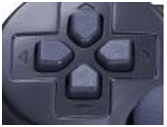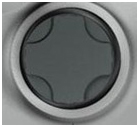Now that we understood the context and the motivations that led to the creation of the PlayStation Dual Shock from the first part, we will get to know more about the device itself.
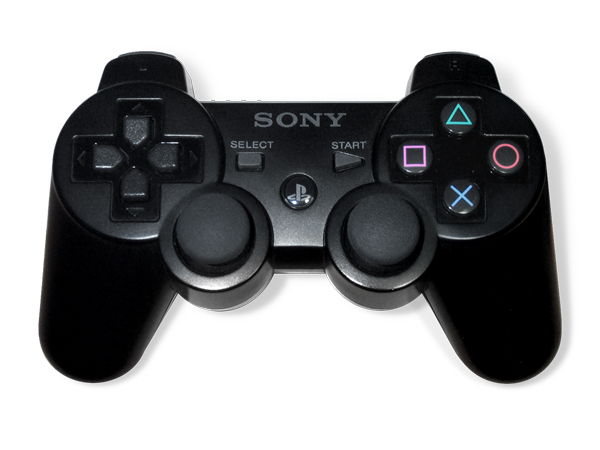
The dimensions of the controller are roughly 6 x 3.5 x 2 inches.
The Dual Shock has on the left side, the same directional pad found on most controllers. However, on the right, the action buttons are labelled with original symbol; this is also an innovation by Gotoh while conventional controllers normally used numbers and letters to label the buttons, as he states himself: "Other game companies at the time assigned alphabet letters or colors to the buttons. We wanted something simple to remember, which is why we went with icons or symbols, and I came up with the triangle-circle-X-square combination immediately afterward." In an interview reported by Games Radar, Gotoh explained how it came up with the symbols "I gave each symbol a meaning and a color. The triangle refers to viewpoint; I had it represent one's head or direction and made it green. Square refers to a piece of paper; I had it represent menus or documents and made it pink. The circle and X represent 'yes' or 'no' decision-making and I made them red and blue respectively."
Further there are also four shoulder buttons on the top, for the middle fingers and two joysticks that improve the experience in some game categories like racing or flight simulation.
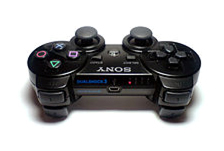
The vibration is an interesting effect as the device rumbles when some dramatic events happen during the game. That provides a great game experience.
However, the joysticks and the haptic effects didn’t appear in the original version of the PlayStation controller. As a clarification, it’s worth mentioning that the Dual Shock is actually an advanced version of that original version.
Now coming to the latest version, which is the one we are mostly concerned with here, the Dual Shock 3, which itself is an advanced version of the Sixaxis, the original game controller for the Sony PlayStation 3. Both Sixaxis and Dual Shock 3 looks the same but they are different in that the Dual Shock 3 is heavier, more opaque and it rumbles.
Even though the Dual Shock 3 can be plugged to the console with a removable USB cable, it’s also a wireless device which can work over a Bluetooth connection. An autonomy of 30 hours is ensured by an internal battery. The wireless ranged is believed to top out over 20 meters. (PS3 Fanboys 365)
Ergonomically, all the Dual Shock are pretty much the same. And honestly, they are the most comfortable game controllers I personally had the chance to play with (I had been trying a wide range of controllers over the years). However, one downside of the Dual Shock 3 could be that it is quite lighter than its predecessors. But here again, the player get used to it after some time.
Putting the DualShock 3 in perspective with competitors
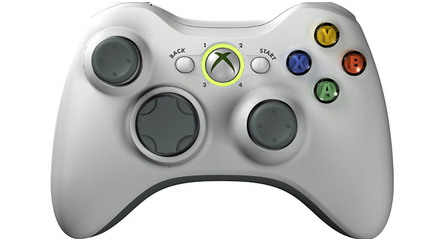
Technically, the Xbox 360 provides an interesting option when it comes to batteries. They use AA batteries which can therefore be easily changed. On the opposite, the Dual Shock internal battery can’t be changed (Not by the gamer, at least). But when it comes to cables, the Dual Shock 3 uses standard USB cables while the 360 controller requires a specific cable that is unique to that controller. All those factors affect the overall cost of the device from the gamer point of view. However, the Dual Shock 3 is more expensive on the market than the 360 controller (£39 against £29 by the time I purchased mine).
Now when it comes to playability, each controller has its own strengths and weaknesses. Mike Ferro once compared the playability of controllers based on the fighting, racing and shooting categories. If we consider racing for example, The key difference here is in the shoulder buttons that the racers normally use to decelerate. They are much more comfortable on the 360 controller as they show less resistance.
For shooting games, the critical controls are the joysticks. The Dual Shock 3 analogue stick has a slightly smaller dead zone, which offers a greater precision and a better response time to the player. Coming to fighting games, the use of the directional pad is critical to make the character execute precise moves. The Dual Shock 3 is clearly superior in that matter because of the way the touches are partitioned. On the contrary, moves are hard to execute on the 360 controller because the user literally feels they are trying to move a single piece of plastic, as opposed to independent up, down, left and right angles.
